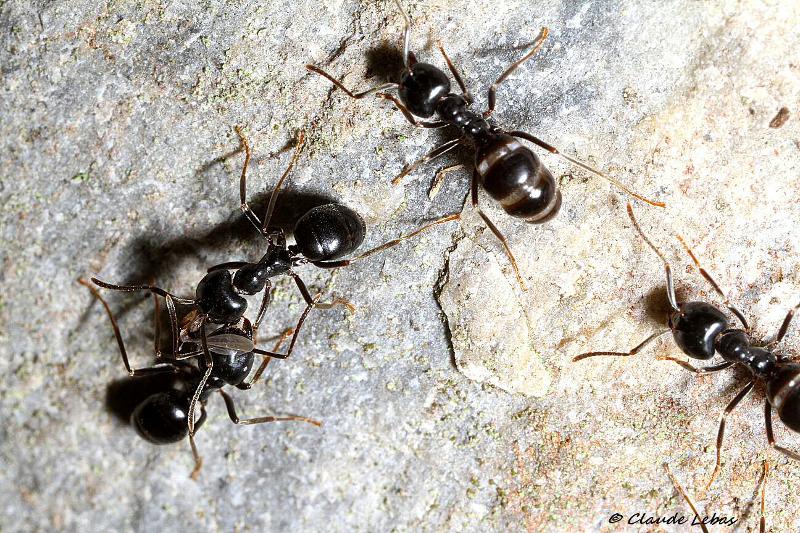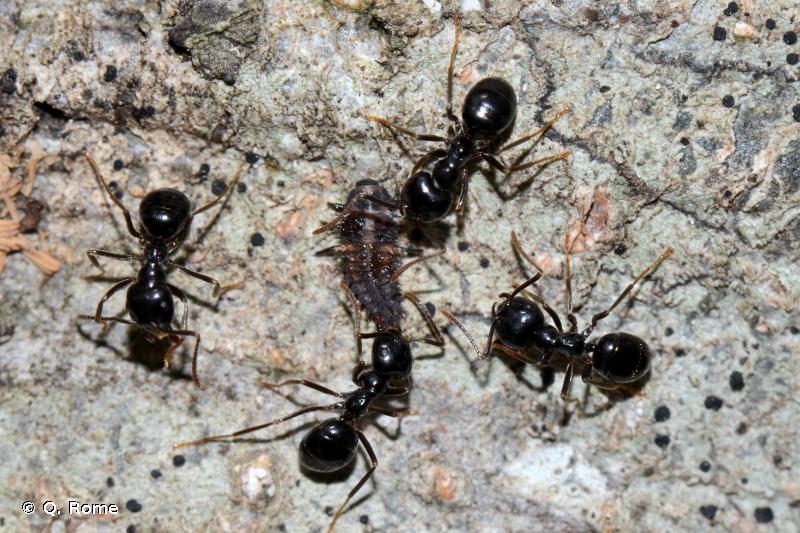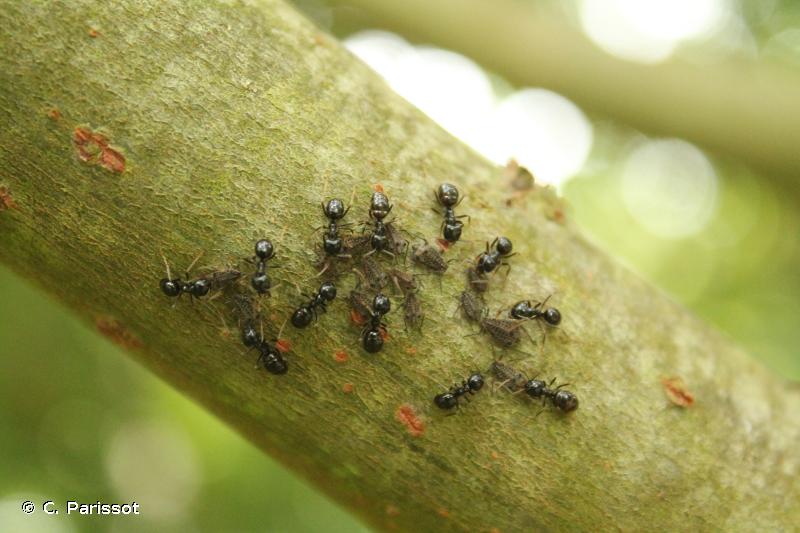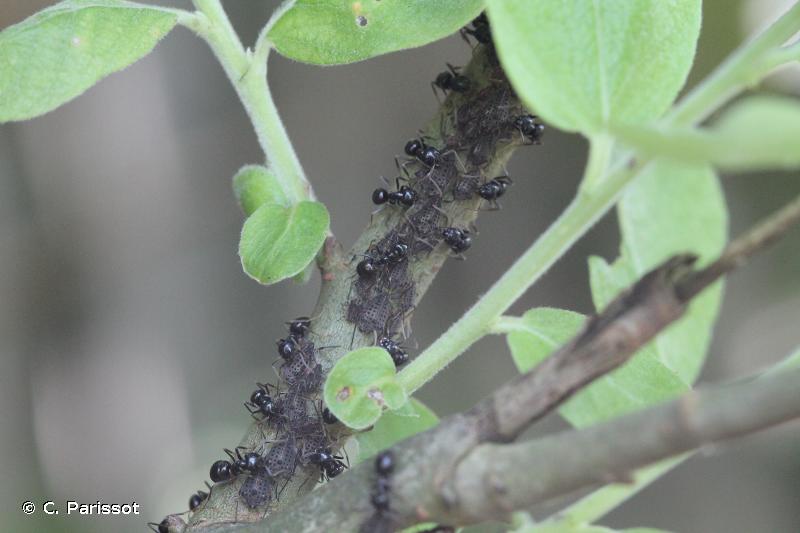
cd_nom

| Author : C. Lebas |
 |
Legend: Ouvrières de Lasius fuliginosus
Any reuse of one or more photographs on this site is subject to an authorization request from the author.
Link to the Code of Intellectual Property (Legifrance)

| Author : Q. Rome |
 |
To get the picture, please visit:
Quentin Rome
Muséum national d'Histoire naturelle
UMR7205 CNRS
Entomologie CP50 - Service Hymenoptera
45 rue Buffon 75005 Paris
courriel : rome@mnhn.fr
Despite the Creative Commons license, please inform the author of the use which will be made of his photo

| Author : C. Parissot |
 |
To get the picture, please visit:
Clément Parissot
Email: clementparissot@hotmail.fr
Despite the Creative Commons license, please inform the author of the use which will be made of his photo

| Author : C. Parissot |
 |
To get the picture, please visit:
Clément Parissot
Email: clementparissot@hotmail.fr
Despite the Creative Commons license, please inform the author of the use which will be made of his photo
Taille/poids :
Longueur du corps : 3,5 à 5 mm (ouvrière) ; 5 à 7 mm (reine) ; 4 à 5 mm (mâle).
Diagnose :
L'espèce est entièrement noir brillant. Elle se reconnaît grâce à la morphologie de la tête qui est très large par rapport au thorax et dont la partie arrière (occiput) est nettement concave.
Détermination :
Cette espèce est simple à reconnaître.
Espèces proches :
La plupart des autres espèces du même genre sont jaune ou bicolore. Les autre fourmis noires n'ont pas la tête aussi large et cette concavité accentuée au niveau de l'occiput.
Période d'observation :
Les fourmilières peuvent être observées toute l'année. L'activité est cependant nettement plus importante au printemps et en automne.
Biologie-éthologie :
Les colonies sont majoritairement monogynes, parfois oligogynes (quelques reines). Elles peuvent renfermer plusieurs dizaines de milliers d'ouvrières. Elle se nourrit essentiellement de miellat de pucerons et les ouvrières peuvent former de grandes colonnes entre le nid de la fourmilière et la ressources alimentaire. C'est une espèce très agressive qui protège fortement "ses" colonies de pucerons. Il peut y avoir plusieurs essaimages par an entre mai et septembre. Les jeunes reines peuvent fonder une nouvelle colonie par la violence en prenant possession du nid d'une autre espèce.
Biogéographique et écologie :
Cette espèce est présente dans toute l'Eurasie tempérée. Elle se trouve dans des milieux boisées ou arborés. Elle se maintient en zone urbanisée. Les nids sont majoritairement localisés dans des arbres creux ou au pied des troncs. C'est une espèce commune que l'on rencontre dans toute la France jusqu'à 1 700 m d'altitude. Elle est plus rare en plaine dans le domaine méditerranéen.
D'après :
Blatrix, R., Galkowski, C., Lebas, C. & Wegnez, P. 2013. Fourmis de France. Delachaux. delachaux et Niestlé. 287 pp.
Zahradnick, J. 1991. Guide des abeilles, bourdons, guêpes et fourmis : les hyménoptères d' Europe. Hatier, Paris. 191 pp.
P. Dupont(UMS 2006 Patrimoine Naturel (AFB / CNRS / MNHN)),2016
Continental
Metropolitan France
Overseas
Marine
Metropolitan France
Overseas
The map presents a summary at the 10 x 10 km grid of the observation data for the species transmitted to the SINP. These data have been subjected to validation filters.
The map presents a reference distribution layer of the species at the scale of departments and marine sectors. The presence and absence data were established by expertise within a network of partners. This reference distribution is used in the validation process of the SINP data at the INPN level.
Corresponds to a report on the basis of at least one observation proved within a period of 10 years (20 years for little-known invertebrates) preceding the year and no presumption of extinction since obtaining the last data nor doubt on reproductive and implemented nature of this population. For migratory species, the presence indicated concerns areas of reproduction.
This status is based on one or more of the following criteria:
This point covers the absence, more difficult by nature to demonstrate than presence. This status is based on one or more of the following criteria:
This status must be assigned to a department in which the presence of the species is casual.
Particular case of absence due to a proven extinction less than a half century ago (older disappearances are treated as "no probable or definite").
In the state of knowledge, we can not comment on the presence or absence in the current department. This is the default status when not comprised in one of the previous categories or whenever there is doubt.
The map shows the global distribution of the species based on GBIF data (Global Biodiversity Information Facility).
